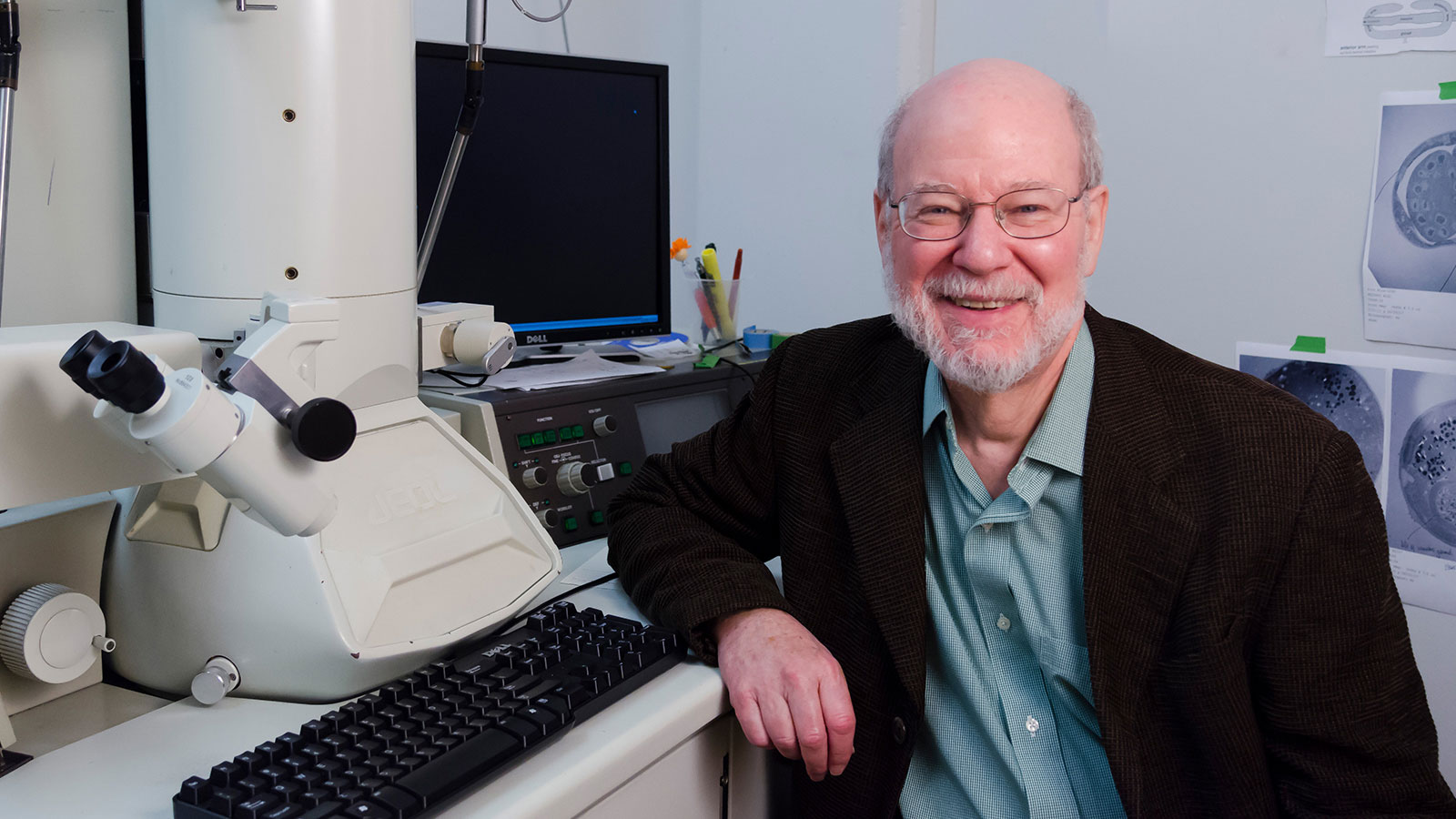Education
- PhD, 1974, Harvard University
- BS, 1968, Mathematics and Economics, MIT
Research Summary
Our lab examines how genes control animal development and behavior. We use the experimentally tractable nematode Caenorhabditis elegans to identify and analyze molecular and cellular pathways involved in these important areas of biology. Ultimately, we hope to clarify these fundamental biological mechanisms and provide further insight into human disease.Awards
- U.S. National Academy of Inventors, Member, 2015
- American Association for Cancer Research Academy, Fellow, 2013
- Royal Society of London, Foreign Member, 2009
- Genetics Society (U.K.), Mendel Medal, 2007
- Eli Lilly Lecturer Award, 2007
- Massachusetts Institute of Technology, James R Killian Jr Faculty Achievement Award, 2006
- National Academy of Medicine, Member, 2003
- American Cancer Society, Medal of Honor, 2002
- The Nobel Foundation, Nobel Prize in Physiology or Medicine, 2002
- Bristol-Myers Squibb, Award for Distinguished Achievement in Neuroscience, 2001
- March of Dimes, Developmental Biology, 2000
- Gairdner Foundation, Gairdner Foundation International Award, 1999
- National Academy of Sciences, Member, 1991
- American Academy of Arts and Sciences, Fellow, 1989
- American Association for the Advancement of Science, Fellow, 1989
- Howard Hughes Medical Institute, HHMI Investigator, 1988
Key Publications
- Replication stress promotes cell elimination by extrusion. Dwivedi, VK, Pardo-Pastor, C, Droste, R, Kong, JN, Tucker, N, Denning, DP, Rosenblatt, J, Horvitz, HR. 2021. Nature 593, 591-596.
doi: 10.1038/s41586-021-03526-yPMID:33953402 - C. elegans discriminates colors to guide foraging. Ghosh, DD, Lee, D, Jin, X, Horvitz, HR, Nitabach, MN. 2021. Science 371, 1059-1063.
doi: 10.1126/science.abd3010PMID:33674494 - Hypoxia-inducible factor cell non-autonomously regulates C. elegans stress responses and behavior via a nuclear receptor. Pender, CL, Horvitz, HR. 2018. Elife 7, .
doi: 10.7554/eLife.36828PMID:30010540 - Genetic control of programmed cell death in the nematode C. elegans. Ellis, HM, Horvitz, HR. 1986. Cell 44, 817-29.
doi: 10.1016/0092-8674(86)90004-8PMID:3955651 - Post-embryonic cell lineages of the nematode, Caenorhabditis elegans. Sulston, JE, Horvitz, HR. 1977. Dev Biol 56, 110-56.
doi: 10.1016/0012-1606(77)90158-0PMID:838129
Recent Publications
- The pro-apoptotic function of the C. elegans BCL-2 homolog CED-9 requires interaction with the APAF-1 homolog CED-4. Tucker, N, Reddien, P, Hersh, B, Lee, D, Liu, MHX, Horvitz, HR. 2024. Sci Adv 10, eadn0325.
doi: 10.1126/sciadv.adn0325PMID:39383227 - Deletion of VPS50 protein in mouse brain impairs synaptic function and behavior. Ahumada-Marchant, C, Ancatén-Gonzalez, C, Haensgen, H, Brauer, B, Merino-Veliz, N, Droste, R, Arancibia, F, Horvitz, HR, Constantine-Paton, M, Arriagada, G et al.. 2024. BMC Biol 22, 142.
doi: 10.1186/s12915-024-01940-yPMID:38926759 - A DEAD-box helicase drives the partitioning of a pro-differentiation NAB protein into nuclear foci. Doi, A, Suarez, GD, Droste, R, Horvitz, HR. 2023. Nat Commun 14, 6593.
doi: 10.1038/s41467-023-42345-9PMID:37852948 - Deletion of VPS50 protein in mice brain impairs synaptic function and behavior. Ahumada-Marchant, C, Ancatén-Gonzalez, C, Haensgen, H, Arancibia, F, Brauer, B, Droste, R, Horvitz, HR, Constantine-Paton, M, Arriagada, G, Chávez, AE et al.. 2023. bioRxiv , .
doi: 10.1101/2023.07.04.547745PMID:37461727 - The transcriptional corepressor CTBP-1 acts with the SOX family transcription factor EGL-13 to maintain AIA interneuron cell identity in Caenorhabditis elegans. Saul, J, Hirose, T, Horvitz, HR. 2022. Elife 11, .
doi: 10.7554/eLife.74557PMID:35119366 - An hourglass circuit motif transforms a motor program via subcellularly localized muscle calcium signaling and contraction. Sando, SR, Bhatla, N, Lee, EL, Horvitz, HR. 2021. Elife 10, .
doi: 10.7554/eLife.59341PMID:34212858 - Replication stress promotes cell elimination by extrusion. Dwivedi, VK, Pardo-Pastor, C, Droste, R, Kong, JN, Tucker, N, Denning, DP, Rosenblatt, J, Horvitz, HR. 2021. Nature 593, 591-596.
doi: 10.1038/s41586-021-03526-yPMID:33953402 - C. elegans discriminates colors to guide foraging. Ghosh, DD, Lee, D, Jin, X, Horvitz, HR, Nitabach, MN. 2021. Science 371, 1059-1063.
doi: 10.1126/science.abd3010PMID:33674494 - H3.3 Nucleosome Assembly Mutants Display a Late-Onset Maternal Effect. Burkhart, KB, Sando, SR, Corrionero, A, Horvitz, HR. 2020. Curr Biol 30, 2343-2352.e3.
doi: 10.1016/j.cub.2020.04.046PMID:32470364 - Activity-Dependent Regulation of the Proapoptotic BH3-Only Gene egl-1 in a Living Neuron Pair in Caenorhabditis elegans. Cohn, J, Dwivedi, V, Valperga, G, Zarate, N, de Bono, M, Horvitz, HR, Pierce, JT. 2019. G3 (Bethesda) 9, 3703-3714.
doi: 10.1534/g3.119.400654PMID:31519744
Multimedia

